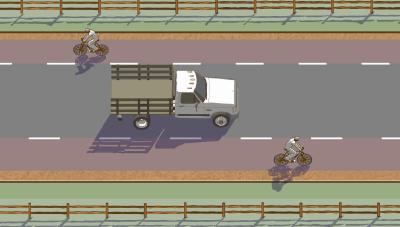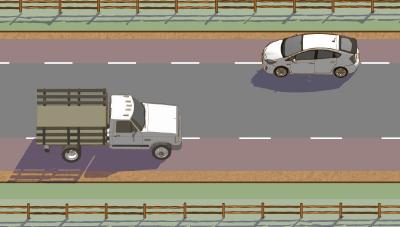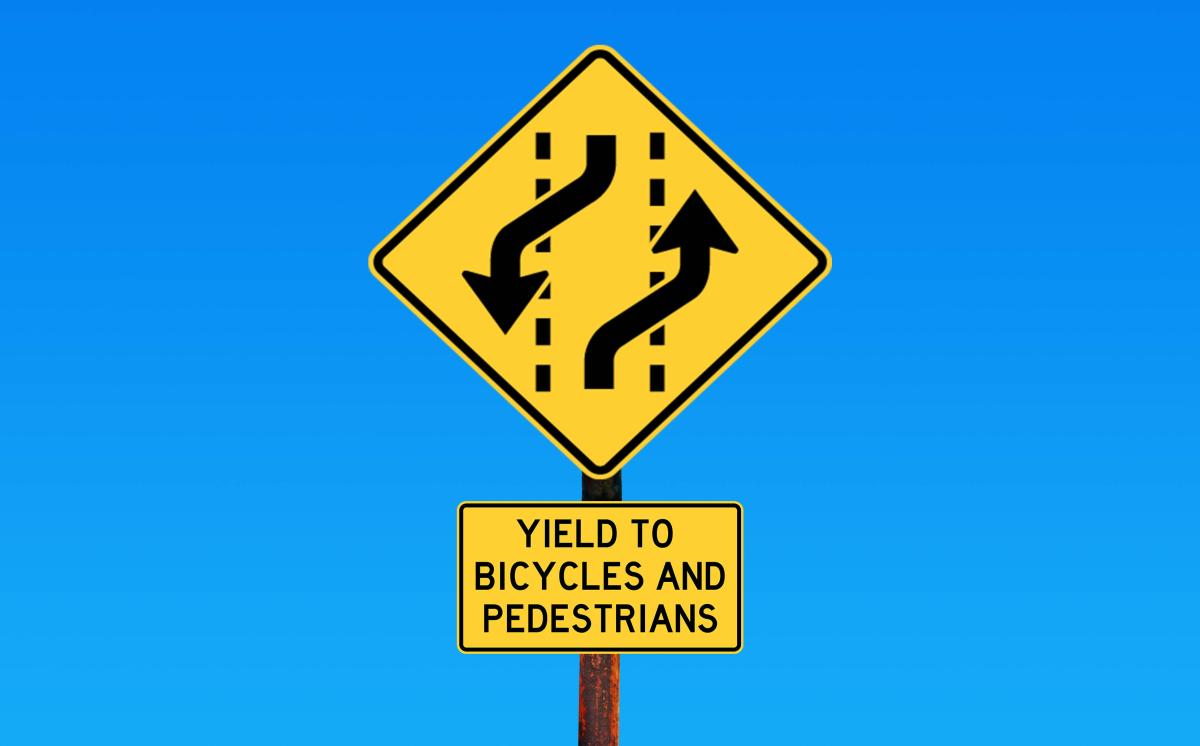Edge Lane Treatments for Local Streets
Edge Lane treatments are an innovative roadway design aimed at enhancing the safety and accessibility of local streets for both pedestrians and bicyclists. Known by various names such as Edge Lane Roads, Advisory Shoulders, or Advisory Bike Lanes, these treatments designate space on the sides of a roadway specifically for vulnerable road users. This can be especially useful in areas with constrained right-of-way where creating a separate shared-use path is not feasible.
How Edge Lane Treatments Work
Edge Lane Treatments involve creating a central lane for two-way motor vehicle traffic, flanked by edge lanes on either side for pedestrians and bicyclists. These edge lanes are marked with broken lines, indicating that motor vehicles can enter them if necessary to pass oncoming traffic, but must yield to any pedestrians or bicyclists present. This design provides a flexible yet safer environment for all road users.
 |  |
| Motorists travel in the center two-way travel lane. When passing a bicyclist, no lane change is necessary (Federal Highway Administration). | When two motor vehicles meet, motorists may need to encroach into the advisory shoulder space (Federal Highway Administration). |
Benefits of Edge Lane Treatments
- Enhanced Safety: By providing dedicated space for pedestrians and bicyclists, Edge Lane Treatments reduce conflicts between motor vehicles and vulnerable road users.
- Cost-Effective: Compared to building separate paths, Edge Lane Treatments are a more economical option that utilizes existing roadway space more efficiently.
- Increased Accessibility: These treatments make it easier and safer for pedestrians and bicyclists to use local streets, encouraging more walking and cycling.

An Edge Lane road sign
Considerations for Implementation
Edge Lane Treatments are not suitable for all roadways. They are best applied in areas where the right-of-way is limited and where traffic volumes and speeds are moderate. Specific considerations include:
- Traffic Volume: Typically suitable for roads with an Average Daily Traffic (ADT) of less than 6,000 vehicles.
- Speed Limits: Preferably implemented on roads with speed limits up to 35 mph.
- Road Width: The central lane width generally ranges from 10 to 18 feet, with edge lanes on either side.
Current Status in Amherst
The Amherst Bicycle & Pedestrian Advisory Committee (BPAC) has been collaborating with the Public Works Department (DPW) to explore the feasibility of implementing Edge Lane Treatments in our town. While we have not yet implemented these treatments, potential locations such as Old Manchester Road and Upper Mack Hill Road are under consideration.
Mack Hill Road
The status of exploring Edge Lane treatments for Mack Hill Road north of Sprague Road are found chronologically in the table below:
| Date | Update |
|---|---|
| 2024-May-14 | BPAC expressed interest in exploring Edge Lane treatments for Mack Hill Rd north of Sprague Rd |
Old Manchester Road
The status of exploring Edge Lane treatments for Old Manchester Road are found chronologically in the table below:
| Date | Update |
|---|---|
| TBD | Next step: BPAC, BoS, DPW to determine implementation of trail period |
| 2022-September | NRPC traffic data report filed for speed, classification, and volume: Old Manchester Road 0.11 miles east of Highland Ave |
| 2022-September | NRPC traffic data report filed for speed, classification, and volume: Old Manchester Road 0.33 miles from Walnut Hill |
| 2022-April-18 | Public Meeting to discuss Edge Lane treatments for Old Manchester Road |
| 2020-October-27 | Report filed, Old Manchester Road technical assessment on Edge Lane treatments by George Bower, Ph.D. |
Additional Resources
For more detailed information on Edge Lane Treatments, please refer to the following documents:
- Edge Lane Road Design Guide
Michael Williams, (2020) - Safety Considerations for All Road Users on Edge Lane Roads
California State University Transportation Consortium (2021) - Small Town and Rural Multimodal Networks Guide (Refer to the "Advisory Shoulders" section)
Federal Highway Administration report number: FHWA-HEP-17-024 (2016) - Sight Distance for Edge Lane Roads
Institute of Transportation Engineers, ITE Journal (2021)






